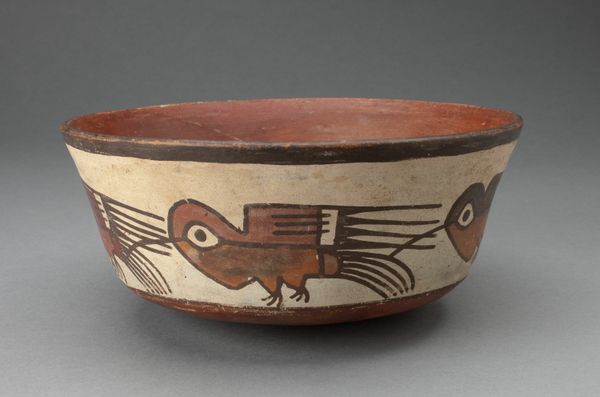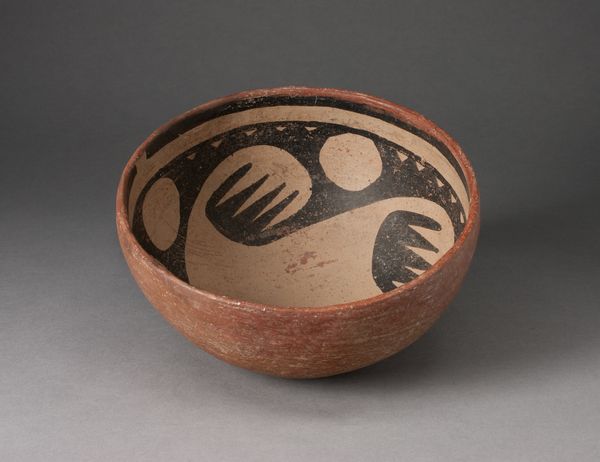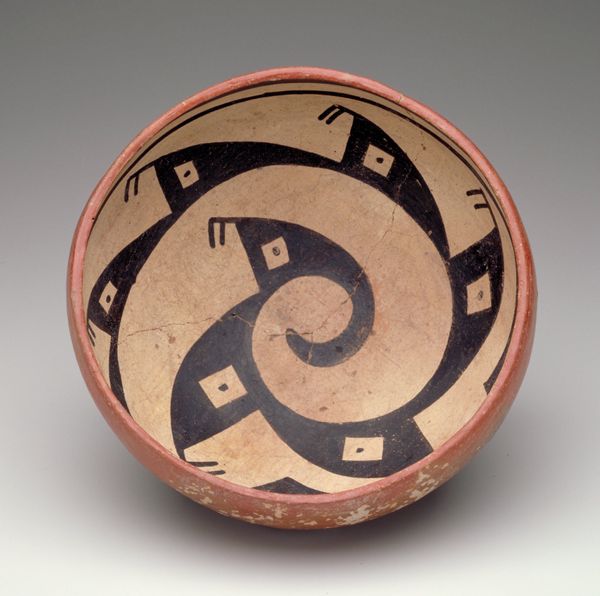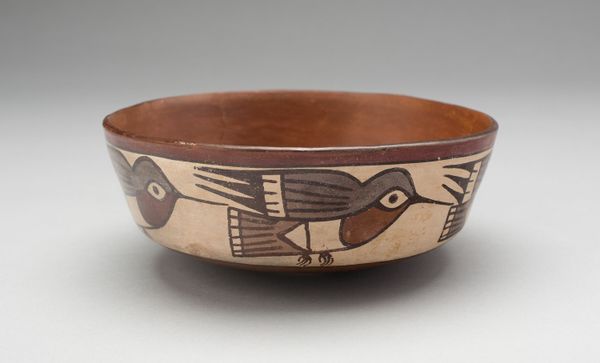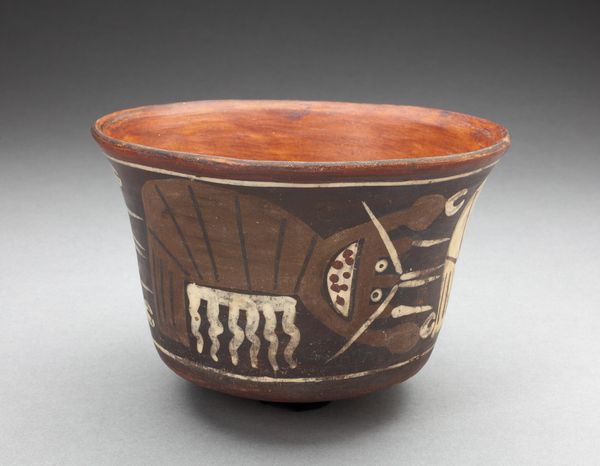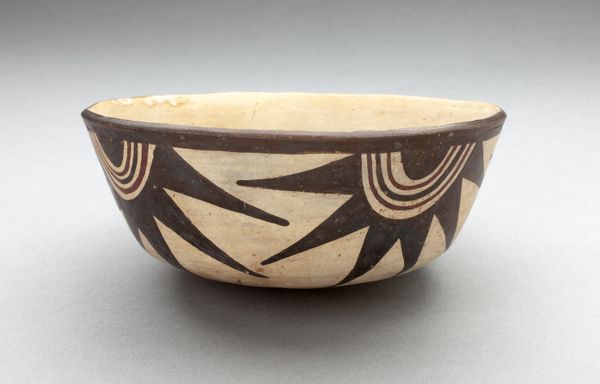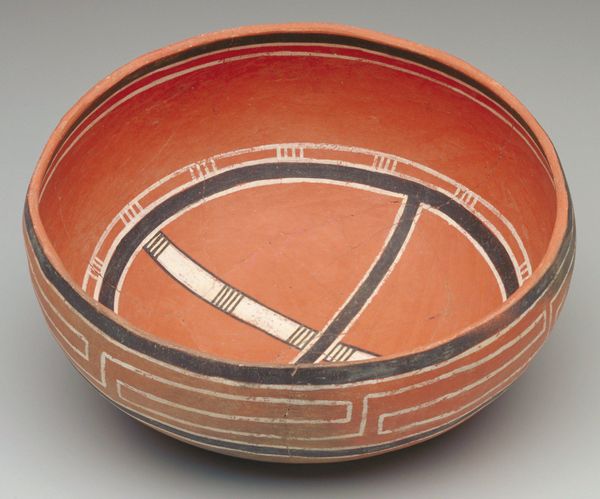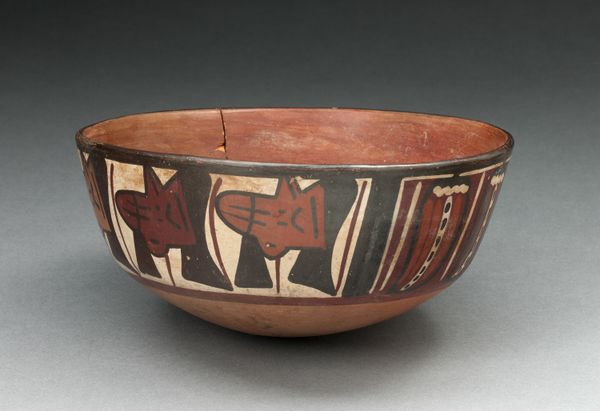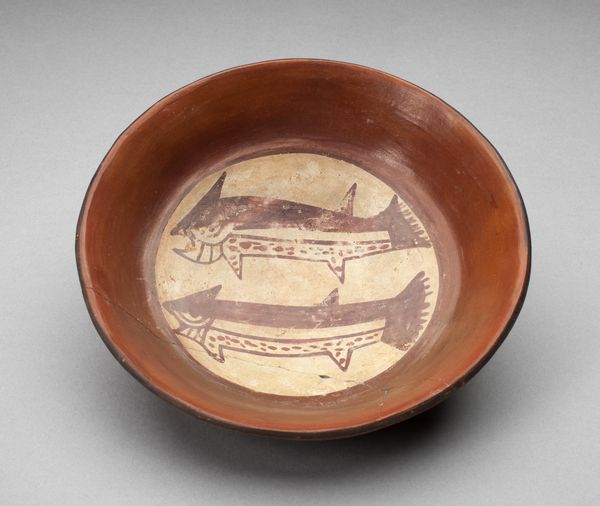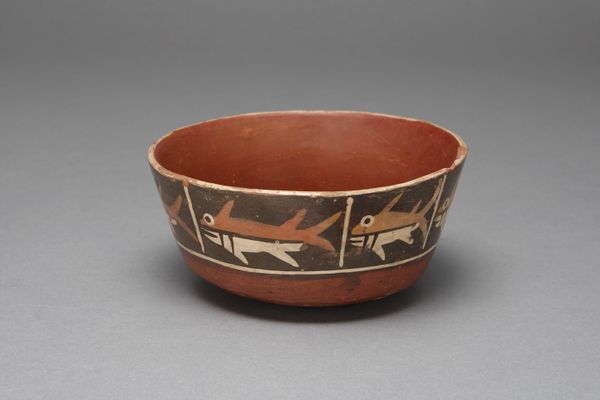
Plate Depicting Round Black-and-White Fish in Interior c. 180 - 500
0:00
0:00
ceramic, earthenware
#
pottery
#
ceramic
#
figuration
#
earthenware
#
ceramic
#
indigenous-americas
Dimensions: 4.5 × 14.6 cm (1 3/4 × 5 3/4 in.)
Copyright: Public Domain
Curator: This plate, housed here at the Art Institute of Chicago, dates back to approximately 180 to 500 AD, created by the Nazca people. It is made of ceramic and painted. Editor: My first impression? Playful! The artist clearly delighted in the stylized form of the fish. I love the geometric simplicity of the depiction. Curator: Absolutely. Nazca pottery, including pieces like this, offers profound insights into their culture. We see recurring motifs, often linked to their cosmology and agricultural practices. Marine life appears quite frequently. Editor: Which is interesting given their arid environment. What can you tell us about the significance of the fish, here? Does it relate to trade, perhaps? Curator: While they did access coastal resources, the fish more likely carries symbolic weight tied to water and fertility rituals, crucial in their desert existence. Note the careful brushwork—each line seems intentional, contributing to the overall sense of harmony. The vessel form itself, intended for ritual feasting and display, also carries cultural significance. Editor: And those colors, so limited, yet so impactful. The black and white contrast sharply against that reddish-brown, almost terracotta backdrop. It amplifies the energy of the figure itself. The horizontal line cutting across the fish suggests direction, or maybe breath. Is this artist’s style typical? Curator: We find consistent stylization throughout Nazca pottery, though individual artists undoubtedly added their personal touch. Analysis of the pigment sources reveals a sophisticated knowledge of local mineral resources and paint preparation techniques. We believe workshops were the norm, enabling the consistency and quantity we see today. Editor: These ceramics really underscore the complex social structure. And for me, it becomes less about the object, and more about understanding the human effort required in making it, its purpose, and how it might connect people through food, trade, or ritual. The artwork creates a place in which those dialogues can take place. Curator: A perspective very much needed, prompting reflection on both past civilizations and present-day issues. Editor: Agreed.
Comments
No comments
Be the first to comment and join the conversation on the ultimate creative platform.
